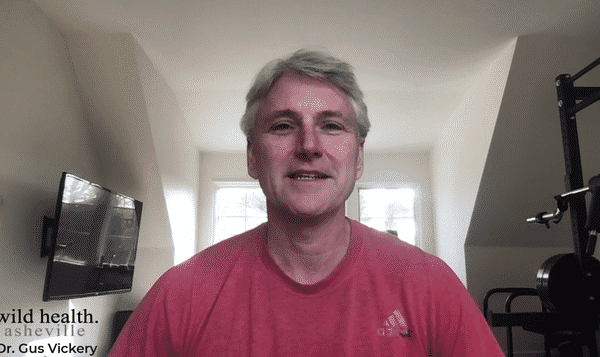I want to share a recent study on time-restricted feeding because it reinforces our core teaching of balancing feeding and fasting. I get more commentary about my teachings on fasting than I do on virtually any other aspect of health. For many people, it seems like a completely foreign concept.
There’s been so much cultural pressure to eat frequently that people are uncomfortable with the idea of fasting.
They believe it’ll induce a starvation response in their body or that it’s bad for their health. They experience fatigue, mood changes, and hunger whenever they have to endure a short period of fasting.
>
“There’s been so much cultural pressure to eat frequently that people are uncomfortable with the idea of fasting.”
Fed and Fasting States
Our bodies are designed to enter the fed state, which is an energy absorbing state, and designed to be in a fasting state, which is an energy utilizing state. When you enter into a fed state, or an anabolic state, a repair-and-restorative state, you create a specific internal hormonal environment with specific genetic expressions designed to accomplish certain purposes.
It’s very important that your cells take up energy and store it properly. It’s very important that you build proteins and help your body recover from the damage that occurs in daily life. Stopping and eating is necessary for life.
The fasting state is a distinct physiological state with its own internal hormonal signaling and its own genetic expression to accomplish specific purposes. This is generally a catabolic state, or a consumption of energy state. The reason individuals have such a hard time tolerating fasting is they’ve not trained their body to do it. Their ability to efficiently manage fasting states from a metabolic standpoint is compromised. That has big implications for their health.
>
“The reason individuals have such a hard time tolerating fasting is they’ve not trained their body to do it.”
By not ever going into the fasting, catabolic states, the body is missing an opportunity to perform very important functions, functions that are very important to experiencing our best health.
Timed Feeding Flexibility
Note that this study isn’t about extended fasts; this study is about timed feeding. Timed feeding means you limit your periods of feeding, during a 24-hour period, to a specific window of time. The most commonly used is a 16/8 schedule, meaning 8 hours of feeding window and 16 hours of fasting. There are variations of this. You can do 20 and 4. Or you can do 23 and 1, meaning you eat one meal a day over an hour and fast for 23 hours. You can vary the schedule day-to-day and week-to-week.
You have extended intervals of time where you’re not in a feeding state. As you can note from the study, in this population of pre-diabetic individuals, those who were in the group that used the timed feeding experienced a reduction in oxidative stress, inflammation, and insulin, and they experienced an improvement in insulin sensitivity. I’d like to be clear that one of the main root causes of chronic obesity, diabetes, and other metabolic conditions is excessive oxidative stress, high inflammation, high insulin, and insulin resistance. This is an abnormal, deranged state of the body that creates disease.
This study demonstrates that when individuals reduce the time of the day that they feed and extend the fasting portions, they begin to reverse the disease state. There are many other studies that also show how the fasting states will induce something called autophagy, where age cells actually self-destruct.
>
“This study demonstrates that when individuals reduce the time of the day that they feed and extend the fasting portions, they begin to reverse the disease state.”
It’s a time for clean up. Fasting is absolutely associated with living longer, healthier lifespans.
Calorie Restricted vs. Timed Feeding
The other arm of this study involved individuals using a daily calorie-restricted diet without timed feeding.
This is just a standard, put-you-on-a-diet approach that we’ve used for decades that we know doesn’t work.
What was demonstrated in the study was they did not get the results that the timed feeding group achieved. They did not have the lowering of insulin, the improvement of insulin sensitivity, or the reduction in oxidative stress, meaning the root causes of their weight gain were not being addressed by simply reducing their calories.
>
“…there has been good evidence that the earlier in the day you have your biggest meal, usually in the afternoon, the more metabolic benefit you’ll get.”
How Do I Start?
For now, regardless if you’re pre-diabetic or not, consider narrowing the time of feeding for yourself each day. Try to use a 16/8 or perhaps a 14/10.
Recognize this is not going on a diet.
During this period of feeding, you’ll eat adequate amounts of calories. You’ll just do it in a more constricted amount of time, and allow your body longer periods of fasting. You can do it from dinner until lunch the next day, from breakfast to breakfast, or from lunch to breakfast the next day.
In this specific study, they did have the individuals stop their feeding earlier in the day, and there has been good evidence that the earlier in the day you have your biggest meal, usually in the afternoon, the more metabolic benefit you’ll get. For those individuals that can stop in the middle of the day and actually eat a large meal and take time to digest it, then skipping dinner and waiting until breakfast to eat could be the best plan.
That doesn’t work for me because my family enjoys our dinners together, and it’s the best time for us to celebrate the ending of our day with food. Also, I work straight through the lunchtime period of my day, so it really wouldn’t work for me to try and stop to eat a big meal, and then digest it properly. But if you can set yourself up to experience your day in that way, then you should. Otherwise, you’ll get very similar results if you’re able to, after you finish your dinner, simply wait until lunch the next day to eat.
Conclusion
This is just one study, and I don’t want to overstate how much we conclude from it. However, there are so many studies that demonstrate the same point. Brief periods of fasting are good for your health. They’re necessary for your longest, healthiest life. Your body needs them. For more details, you can see my book, Authentic Health, and my 9-Week Nutrition Program. Fasting is good for you. Consider giving it a try. Join me!







